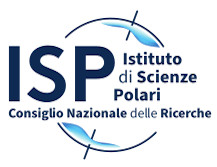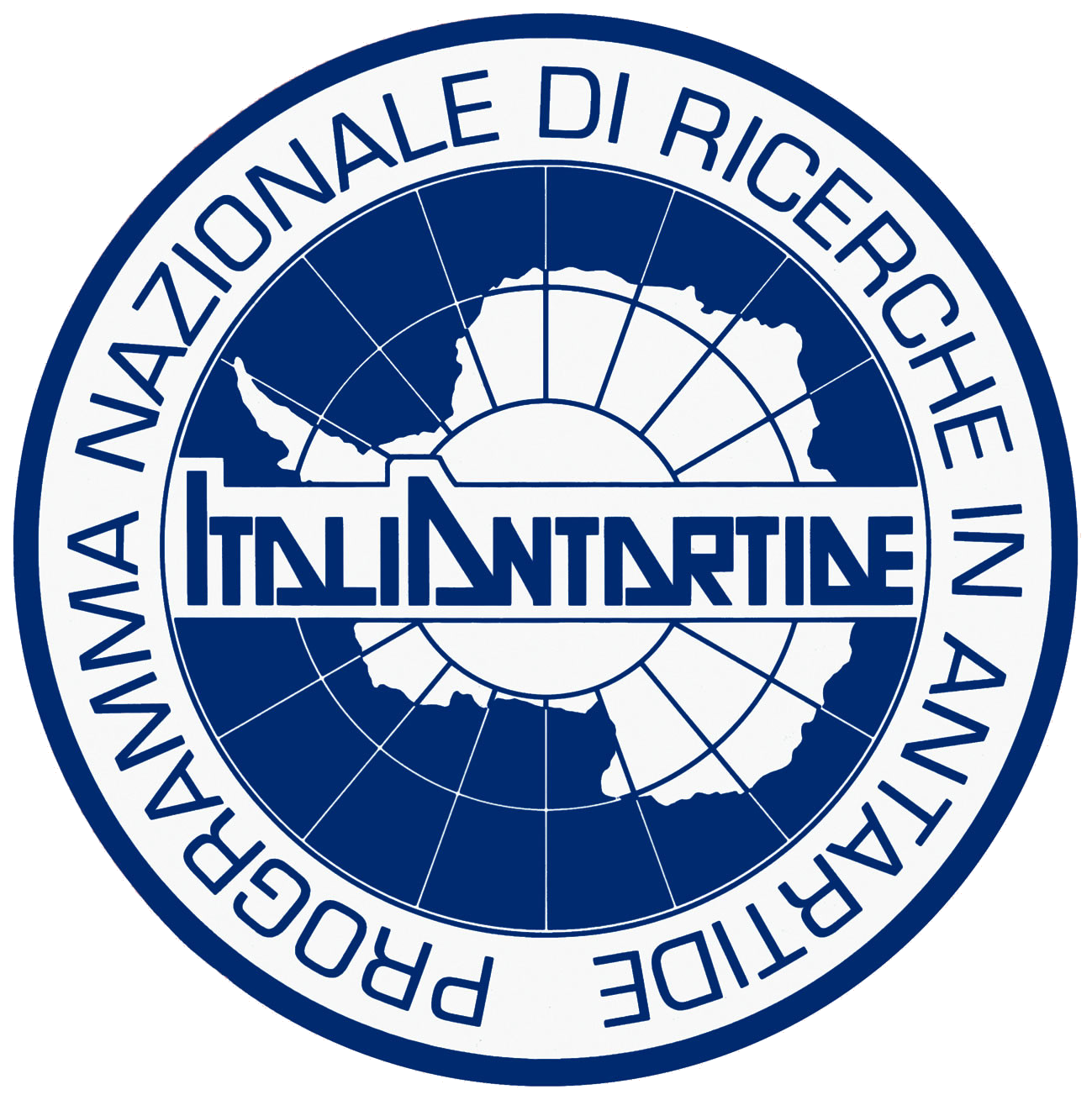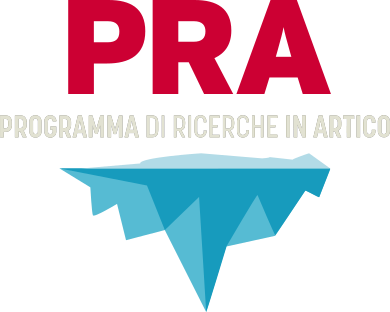English_content
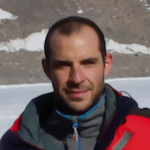 Master’s degree in Marine Biology at the University of Padova; PhD student at the University of Bologna (FishMed-PhD).
Master’s degree in Marine Biology at the University of Padova; PhD student at the University of Bologna (FishMed-PhD).
Since 2015 he has been working on national fishery monitoring programs, within the EU-Data Collection Framework, funded by scholarships of Ancona National Research Council (CNR). From 2015 he also has been participating in marine research activities of the Padova University, at the Hydrobiological Station of Chioggia. His fields of interest are inherent to the biological life cycles of commercial fish species of the Mediterranean and the Antarctic areas (notothenioids). In particular, he investigated reproductive traits of these species thought histological analyses of gonads, age structure/growth cycle by means of otoliths’ readings and some trophic features using the stomach content analyses.
He collaborated in more than 10 scientific trawl surveys in Italian water and joined the 38th Italian expedition to Antarctica (2022/2023).
Google Scholar Scopus - Author ID: 57192875066 Research Gate: Federico Calì
 M. Sc. in Environmental Sciences, Ph.D. in Environmental Sciences (oceanography) from the University of Venice. Research Director at the CNR Institute of Polar Sciences, Venice, CNR Researcher since 1997. From 2019 to early 2025, he held the role of Head of the Research Division at NATO STO CMRE in La Spezia.
M. Sc. in Environmental Sciences, Ph.D. in Environmental Sciences (oceanography) from the University of Venice. Research Director at the CNR Institute of Polar Sciences, Venice, CNR Researcher since 1997. From 2019 to early 2025, he held the role of Head of the Research Division at NATO STO CMRE in La Spezia.
He taught classes at the University of Bologna, Ancona, and Bocconi University in Milan, and owns the National Scientific Qualification as Full Professor in the 04/A4 Geophysics sector. Awarded the Office of Naval Research Command Coin, he served as Deputy President of the Ocean Science Division at the EGU (European Geoscience Union) from 2019 to 2024. In 2022, he received the Tridente d’Oro award for scientific and outreach merits and, starting in 2024, was admitted as an International Fellow of The Explorers Club.
He investigates the relationship between oceans and climate with a multi- and interdisciplinary approach. His main area of interest is physical oceanography and the interactions occurring between atmosphere, water and sediments. His research has focused on understanding and numerically modeling the role of currents, winds and waves in the transport of heat and salt in the oceans, and the associated variability in the context of an evolving climate.
The extraordinary role in the redistribution of energy between oceanic and atmospheric masses, and the determination of the related energy transfer along the water column, has been central to his research activities, intertwined with connections to: biogeochemical and sedimentological aspects (transport of nutrients and associated sediments); marine renewable energies; unexploded ordnance in the sea; and risks related to flooding and coastal erosion. He has promoted and developed a series of 3D circulation models coupled with meteorological models, third-generation wave generation and propagation models, and modules for the transport of non-cohesive sediments and biogeochemical modules.
The modeling approach has been validated with data from satellites, remote observations, and in-situ measurements in particularly vulnerable areas in the context of global warming. Along with the use of CTD probes, wave gauges, current meters, and turbidimeters, innovative techniques such as Maritime Unmanned Systems (MUS), seismic oceanography, and turbulence measurements with free-fall profilers have been employed. Author and co-author of over 120 papers in ISI journals with Impact Factor, 2 CNR patents, and 5 popular science books, he is a member of the Editorial Board of Scientific Reports (Nature group), Progress in Oceanography, and Ocean Dynamics.
ResearchGate Google Scholar
 Graduated in Biological Sciences, Specialist in Applied Microbiology, she has been a CNR researcher since 1994.
Graduated in Biological Sciences, Specialist in Applied Microbiology, she has been a CNR researcher since 1994.
Her scientific interests focus on marine microbial ecology and the role of microorganisms in the decomposition processes of organic matter in Mediterranean and polar environments through enzymatic activity measures (aminopeptidase, glucosidase, phosphatase); the search for pathogenic bacteria (Escherichia coli, Vibrio spp.) by means of fluorescent antibody method and enzymatic assays; changes in physiological parameters (digestive enzymes, non-specific immunity) of marine Teleosts in response to stressors. Recent studies in extreme environments have explored the abundance and activity of the free-living heterotrophic bacterial community (UVASS, Svalbard, Arctic Project), present in permafrost or brines (National Antarctic Research Program projects-PNRA 2013/AZ1.05), of microbial biofilms over plastic substrates (PNRA16_00105), acting also as vectors of antibiotic resistance (PNRA 14_00090).
Member of the PhD School for Applied Hygiene - Univ. Messina (2006-2011) and of the Plankton (2000-2001; 2002-2003; 2010-2012; 2013-2015) and Aquaculture Committees (2004-2006; 2016-2018; 2019-2021) of the Italian Society of Marine Biology. Qualified as Full Professor of Ecology (2012-2020). P.I. and member of several research projects (PNRA, EU FP 7 PERSEUS, Marine Strategy, VECTOR, MIUR Cluster-Advanced Monitoring Systems), she has collaborated with the Institute of Hydrobiology-Wuhan (China), Univ. du Sud Toulon-France, CENPAT- Puerto Madryn (Argentina), CERTE-Soliman (Tunisia).
Co-author of over 350 scientific papers, she has a H index 19 (Scopus). Refeee (Publons) and member of Editorial Boards of OA international journals (J. Mar. Sci. Engin.-JMSE, MDPI; J. Coastal Life Medicine, Hainan Univ.; J. Clinical Microbiol. Biochem. Technol.- PEERTECHZ; The Open Fish Sci. J., The Open Mar. Biol. J., BENTHAM; J. Oceanogr. Mar. Res., LONGDOM; J. Ecosyst. Ecogr. OMICS).
Scopus - Author ID: 7102219836 ![]() http://orcid.org/0000-0002-3819-5486 Scholar
http://orcid.org/0000-0002-3819-5486 Scholar
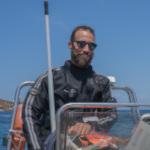 In 2017, he earned a PhD in Environmental and Evolutionary Biology, specializing in Ecological Sciences. Currently, he is a Researcher at the Department of Environmental Biology of Sapienza University of Rome. His primary research interests encompass the ecology of benthic communities, the impacts of human activities and climate change on marine ecosystems, as well as ecological restoration. Specifically, his work focuses on:
In 2017, he earned a PhD in Environmental and Evolutionary Biology, specializing in Ecological Sciences. Currently, he is a Researcher at the Department of Environmental Biology of Sapienza University of Rome. His primary research interests encompass the ecology of benthic communities, the impacts of human activities and climate change on marine ecosystems, as well as ecological restoration. Specifically, his work focuses on:
• assessing the distribution, composition, structure, and health status of Mediterranean benthic communities of conservation interest;
• studying and defining the processes of bioconstruction and bioerosion on natural and anthropic substrates, especially concerning submerged archaeological finds;
• evaluating the effects of human disturbance, heat waves, and ocean acidification on benthic communities, with particular attention to the quantification of resistance and recovery processes;
• defining methods for the active and passive restoration of marine ecosystems and new tools useful for evaluating their effects in terms of recovery and state of health.
Since 2015, he has worked as a Scientific Diver and, since 2018, he has also been teaching at the Scientific Diving Summer School in collaboration with researchers from OGS and the University of Genoa.
He has authored or co-authored over 30 indexed papers (SCOPUS) published in international journals.
 CTER VI level from November 2014.
CTER VI level from November 2014.
From 2014 to 2018 I worked as a technician at the CNR ISMAR Venice participating in numerous oceanographic campaigns and dealing with reagents, waste disposal, material orders and safety in laboratories. Since 2019 I have been a member of the Institute of Polar Sciences of the CNR, carrying out the following tasks:
- Laboratory technician and use of laboratory instruments;
- Collection, preparation and analysis of samples;
- Maintenance and repair of instruments;
- Preparation and transport of equipment for Arctic missions or mountain trips;
- Logistics Management Laboratories and Reagentaries;
- Instructor for orders on the electronic market;
- Appointment by Computer Protocol;
- Control and Technical Management White Rooms (Clean Rooms).
 She obtained a Bachelor's and Master's degree in Computer Engineering at the University of Florence and a Ph.D. in Information Engineering (nonlinear dynamics and complex systems) at the same University. She later worked as a post-doc fellow at the CNR Bioeconomy Institute. She currently holds the role of technologist at the Institute of Polar Sciences of the CNR, based in Bologna, collaborating on the data management and administration of the IT infrastructures of the NADC (National Antarctic Data Center) and IADC (Italian Arctic Data Center) projects. Thanks to experience in the field of data management and their analysis also through machine learning techniques, it helps researchers publish and share the data collected from research, making them compatible with modern standards and adhering to the principles of data FAIRness and Open Science.
She obtained a Bachelor's and Master's degree in Computer Engineering at the University of Florence and a Ph.D. in Information Engineering (nonlinear dynamics and complex systems) at the same University. She later worked as a post-doc fellow at the CNR Bioeconomy Institute. She currently holds the role of technologist at the Institute of Polar Sciences of the CNR, based in Bologna, collaborating on the data management and administration of the IT infrastructures of the NADC (National Antarctic Data Center) and IADC (Italian Arctic Data Center) projects. Thanks to experience in the field of data management and their analysis also through machine learning techniques, it helps researchers publish and share the data collected from research, making them compatible with modern standards and adhering to the principles of data FAIRness and Open Science.
 Polar Science PhD candidate at the Ca’Foscari University of Venice since 2021, she holds a master’s degree with honours in Chemistry from the University of Venice. The overwintering working experience in Antarctica in 2019 allowed the deepening into polar and snow chemistry and field expertise.
Polar Science PhD candidate at the Ca’Foscari University of Venice since 2021, she holds a master’s degree with honours in Chemistry from the University of Venice. The overwintering working experience in Antarctica in 2019 allowed the deepening into polar and snow chemistry and field expertise.
For her PhD thesis she works on the photochemistry of halogens and mercury in superficial snow and Antarctic ice cores.
 Environmental Scientist and PhD candidate in Polar Science, at Cà Foscari University of Venice.
Environmental Scientist and PhD candidate in Polar Science, at Cà Foscari University of Venice.
She graduated with a Bachelor's degree in Environmental Science and Technology from the University of Milano-Bicocca, interested in climate change, atmospheric chemistry and physics, driven by a desire to protect the Planet; she continued her studies, obtaining her MSc degree, with Honors, in Environmental Science and Technology from the University of Milano-Bicocca, with a thesis on paleoclimate reconstruction; studying eolian mineral dust trapped in the RICE, Antarctic ice core.
Currently a Ph.D. candidate in Polar Science at Cà Foscari University of Venice, with her research project she is working on atmospheric chemistry, studying the atmospheric heating rate in the Arctic due to Black Carbon, a crucial topic for the comprehension of the Arctic amplification phenomenon.
 The research of Paolo Cescon is currently focused on three main areas:
The research of Paolo Cescon is currently focused on three main areas:
- Climate impacts on natural and human systems.
- Heavy metal speciation in environmental matrices from areas subjected to various degrees of human activity.
- Chemical contamination on a planetary level.
He is an author of 170 scientific publications in qualified, high impact factor international journals, and has set up important collaborations with many international scientific institutions.
Previous appointments and activities
- Full Professor of Analytical Chemistry at Ca’ Foscari University of Venice
- Member of the Scientific Committee of the National Institute of Health
- National Coordinator of the Section “Chemical Contamination” of the National Program of Scientific Research in Antarctica (PNRA)
- Member of the Scientific Committee of the Ministry of the Environment
- Vice-Rector of Ca’ Foscari University of Venice
- Member of the National Scientific Commission of the PNRA
- Director of the national Centre for Environmental Chemistry and Technologies-CNR
- Director of the Institute for the Dynamics of Environmental Processes-CNR
- Dean of the Faculty of Mathematical, Physical, and Natural Sciences - Ca’ Foscari University of Venice
- Special Commissioner for the Italian Agricultural Research Council (CRA)
 Diploma of technical-tourist maturity. 1992-1998: research support activities at the Ca' Foscari University, Department of Environmental Sciences, with freelance work contracts. 1998-2011: permanent position, as technician, at the Ca' Foscari University, Department of Environmental Sciences.
Diploma of technical-tourist maturity. 1992-1998: research support activities at the Ca' Foscari University, Department of Environmental Sciences, with freelance work contracts. 1998-2011: permanent position, as technician, at the Ca' Foscari University, Department of Environmental Sciences.
She was assigned, by convention, to the Institute for the Dynamics of Environmental Processes of the CNR (IDPA), formerly Centre of Study on Chemistry and Technologies for the Environment. From 1 November 2011 employee CNR (following mobility between entities) at the Institute for the Dynamics of Environmental Processes (IDPA), profile C.T.E.R. - VI level. From 2004 to 2019 she assumed the role of Administrative Secretary of IDPA. In June 2019 she moved to the Institute of Polar Sciences (ISP) where she serves as Administrative Secretary.
In the first years of activity Valentina Cester has taken care of the logistic part of the expeditions in Antarctica relatively to the activities of the researchers of IDPA and of the group of Environmental Analytical Chemistry of the University Ca' Foscari. She has also played an active part in the organization of the National Conferences of the Environmental Contamination-PNRA Sector.
More...
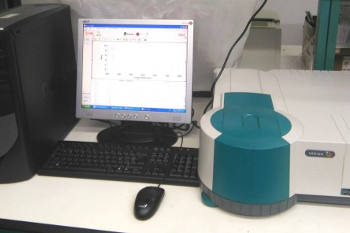 Brief description
Brief description
The research activities carried out in the HydroChem laboratory in Messina are aimed at studying the marine (coastal and pelagic) and lake water bodies, providing technical-scientific support to the study of biogeochemical cycles and ecological processes also in relation to marine acidification, as well as studies of microbial biomass conducted in the MAMB Laboratory. In particular, analyses of oxygen, salinity, pH, nutrients (nitrogen and phosphorus) and particulate organic carbon are performed. As part of the environmental monitoring activity, several prototype nutrient analyzers were tested both on fixed platform and on boat, at pristine or anthropogenically polluted sites.
Matrices of interest
The analyzed matrices are mostly attributable to the hydrosphere (marine, river and lake waters, brines).
Instrumentation
The laboratory is equipped with basic instrumentation for environmental chemistry [spectrophotometer, spectrofluorimeter, luminometer, digital burette for oxygen titration, centrifuge, salinometer, automatic nutrient analyzers (ammonia, nitrites, nitrates and orthophosphates), extraction hoods, vacuum pumps, filtration septa, magnetic shaker, pHmeter].
For details: Dr. Filippo Azzaro – filippo.azzaro AT cnr.it
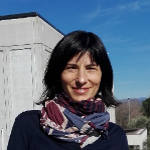 Diploma of Linguistic Maturity. From 2007 to 2018 hired at the CNR with fixed-term contracts of employment, with the professional profile of Collaborator Administration, Level VII, under an agreement between the National Research Council and the Ministry of Environment and Protection of Land and Sea - Directorate General for Environmental Assessments - Division IV (now Division III - Major Risk and Integrated Environmental Authorization) with tasks relating to the organization and management of information flows and documents relating to the procedures ex D. L. gs 152/2006 et seq. L.gs 152/2006 and subsequent amendments and additions relating to AIAs of national competence, with regard to the coordination of both technical and economic-financial activities. Support for the management of information systems dedicated to the conduction of the AIA procedures and use by the public of the relative data.
Diploma of Linguistic Maturity. From 2007 to 2018 hired at the CNR with fixed-term contracts of employment, with the professional profile of Collaborator Administration, Level VII, under an agreement between the National Research Council and the Ministry of Environment and Protection of Land and Sea - Directorate General for Environmental Assessments - Division IV (now Division III - Major Risk and Integrated Environmental Authorization) with tasks relating to the organization and management of information flows and documents relating to the procedures ex D. L. gs 152/2006 et seq. L.gs 152/2006 and subsequent amendments and additions relating to AIAs of national competence, with regard to the coordination of both technical and economic-financial activities. Support for the management of information systems dedicated to the conduction of the AIA procedures and use by the public of the relative data.
From December 2018 permanent member of staff of the CNR with the profile of Collaborator, VII level, under the same Collaborative Agreement.
From September 2019 transferred to the Institute of Polar Sciences, at the Secondary site of Rome Tor Vergata.
The Amundsen-Nobile Climate Change Tower (CCT) is a scientific platform dedicated to studying the thermodynamic characteristics of the atmospheric boundary layer and the exchange processes between the surface and the lower layers of the atmosphere. The structure is composed of 17 modules equipped with patch boxes to provide a power supply and data connection that ends in a dedicated hut at 40 m from the tower, where the acquisition systems are located. The CCT provides continuous profiles of meteorological parameters at four levels up to 34 m, measurements of turbulent fluxes of momentum heat and moisture at two levels as well as of radiation balance components (visible and infrared). Measurement of the characteristics of the snow layer (depth and temperature) are also provided in conjunction with the atmospheric parameters.
Due to the uniqueness of such an infrastructure in Ny-Ålesund, since 2012, the CCT and the surrounding area have become a point of reference for the integrated observation of the components of the climate system. Offering access to national and international research groups, new scientific installations have been set up. In particular for the measurement of greenhouse gases (in collaboration with KOPRI); for the measurement of the snow cover index and spectral reflectivity of the snow; for remote sensing of wind profiles with SODAR and WindLIDAR (in collaboration with KOPRI); to study processes in the active layer, the vegetation, the snow cover and the permafrost temperature profiles.
High-altitude weather and climate observatory of Col Margherita (MRG)
Regional Station GAW-WMO
The Col Margherita High Altitude Observatory (MRG) is located on the southern slope of the Eastern Alps (46.37 N, 11.79 E), at an altitude of 2543 meters above sea level. The site is located within the Dolomites, a UNESCO World Heritage Site, and is considered strategic, because despite not being at a particularly high altitude, it is representative of the synoptic conditions of the south-facing Eastern Alps, where there is no similar station. The main characteristics of the site are that it represents the synoptic conditions of the free troposphere at that height and pressure (700 hpa), as there are few the orographic barriers in the surrounding area and there is an absence of local pollution sources.
Instrumentation currently installed at the observatory:
- full meteorological station: temperature, humidity, wind speed and direction, atmospheric pressure, incident and reflected solar radiation, sensors for the measurement of atmospheric precipitation and snow cover height;
- mercury analyser;
- temperature controlled bulk deposition sampler for the collection of precipitation for mercury analysis;
- bulk deposition samplers to collect samples for the analysis of organic, inorganic and stable isotopes in precipitation.
Follow us on Twitter
History
The Col Margherita Observatory was built in 2012 in the framework of GMOS Project (2013-2015) and it was subsequently operational within the Nextdata (2016-2018) and I-GOSP (2018-2020) projects. The observatory is equipped with a complete meteorological station, an ozone analyser and a total gaseous mercury analyser. The station is fully automated. It is connected to the main power grid and is also equipped with a solar power backup system with ~200ah of batteries in case of network failure. The observatory is equipped with a remote control via GSM/GPRS technology. The site, due to its proximity to the cable car of the San Pellegrino Ski is accessible, and can be used for seasonal sampling campaigns for snow, and wet and dry atmospheric deposition.
 Ministero dell'Universita e Ricerca
Ministero dell'Universita e Ricerca
Programma Ricerche Artico
Programma Nazionale di Ricerca in Antartide
 Ministero degli Affari Esteri e della Cooperazione Internazionale
Ministero degli Affari Esteri e della Cooperazione Internazionale
L'Italia e l’Artico
L’Italia e l’Antartide
CNR-ISP
National Research Council
Institute of Polar Sciences
c/o Scientific Campus - Ca' Foscari University Venice - Via Torino, 155 - 30172 VENEZIA MESTRE (VE)
Phone: +39 041 2348547 - E-mail: protocollo.isp AT pec.cnr.it
Fax: +39 041 2348 549 - Codice Fiscale: 80054330586 - P.I.:02118311006
Unless otherwise indicated, the content of this site is licensed : Attribution Non Commercial Share Alike 4.0 International (CC BY-NC-SA 4.0)
Privacy policy e Cookie policy - Transparent administration (CNR)
